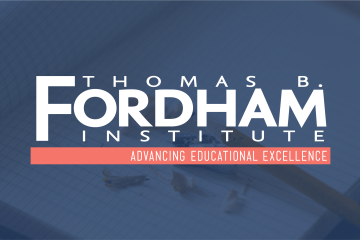The Trump administration’s K–12 education policy prescriptions typically focus on ways to provide financial support for private schools, including federal vouchers and tax-credit scholarships. These programs require congressional action through new K–12 legislation or modifications to the U.S. tax code.
However, the administration has an additional opportunity to provide families with more K–12 education choices that has received far less attention. This involves existing federal programs, administrative guidance, and regulatory shifts that would not require new legislation. Doing this would create more choices for families, give educators more options to work in different learning environments and unlock more educational opportunities for K–12 students nationwide.
This approach is consistent with the January 29 executive order that focused on helping parents escape the “geographically based school assignments” that constrain “choosing and directing the upbringing and education of their children.” The order requires the secretary of education to issue guidance on how states can use federal formula and discretionary grant programs to do this, consistent with the administration’s desire to return education authority to the states.
Here are five ways the administration should advance K–12 public school choice using existing grant programs and legal authorities.
Charter Schools. Charter schools serve nearly 3.8 million students across forty-five states, the District of Columbia, Guam, and Puerto Rico. They operate with more flexibility than traditional district schools and are governed by independent boards. The federal Charter Schools Program already provides competitive grants in several categories, with a fiscal year 2025 budget of $450 million. The Trump administration could make this program the center of its efforts to expand K–12 public school choice. It could increase funding for this program, streamline grant processes, and create incentives for states to remove caps on charter growth, among other things. The executive order specifies that federal funds for Department of Defense and Bureau of Indian Affairs schools should also be used to support the expansion of K–12 charter schools.
Magnet Schools. Magnet schools are schools of choice that offer themed curricula—from arts to STEM to language immersion—and serve over 3.5 million students. They promote voluntary desegregation and provide rich learning environments within traditional districts. The federal Magnet Schools Assistance Program has a Fiscal Year 2025 budget of $139 million to help districts replicate successful models. The administration could also investigate how to incentivize states to create magnet schools for low-income, gifted students with high but untapped potential, as recommended by the National Working Group on Advanced Education.
New School Models. The pandemic led parents to seek new learning environments for their children, including microschools and learning pods. Microschools are a modernized version of the one-room schoolhouse, offering intimate, personalized learning environments. Around 6 percent of microschools receive public school funding. Learning pods are small groups of children typically, organized by parents and teachers, who come together to learn and socialize. Consistent with the executive order, the Department of Education could allow states and local districts to utilize existing programs, such as Title I dollars for low-income students, special education dollars under the Individuals with Disabilities Education Act or other funding sources, to support these new school models.
Open and Dual Enrollment. Forty-three states allow some form of open enrollment, enabling students to attend public schools outside their assigned zones. Nearly one in three high school students participates in dual enrollment, taking a college-level course before graduation. The administration could use discretionary grant funding to incentivize states to adopt exemplary, transparent, open- and dual-enrollment programs, including stronger coordination between K–12 and higher education systems. They could also allow states and local districts to use Title I, IDEA funds, and other programs to follow students to whichever open and dual enrollment program they attend, in the way public dollars follow charter school students to the school they choose to attend.
Career Pathways Programs. High school students deserve more than a one-size-fits-all college preparation track. Pathway education and training programs enable them to select and earn credentials for high-demand jobs that typically do not require a college degree. These programs are often accompanied by services such as career counseling and flexible entry and exit points. They offer a variety of course choices and work-based learning options, including apprenticeships, internships, career and technical education, career academies, boot camps for acquiring specific skills and staffing, placement, and other support services for those seeking employment. The administration could coordinate the Department of Education’s Perkins Career and Technical Education Act and Labor Department funds to expand these public school career pathways programs. This approach is consistent with the executive order, which directs the secretaries of labor and education to create a plan utilizing discretionary grant programs to expand educational freedom for America’s families and teachers.
One additional suggestion: Giving families and young people K–12 choices without some quality assurance is a false promise. The administration should promote rigorous transparency, data reporting and accountability for all public school options. This would ensure that parents can make informed decisions and that innovative models deliver strong learning results for young people. This would include maintaining the annual testing requirements now part of the National Assessment of Educational Progress and reinventing the Department of Education’s Institute of Education Sciences and its mission, dating to 1867, “to show the condition and progress of education.”
K–12 public school choice isn’t an abstract idea. It’s a set of real, growing options that parents, students, and educators are already embracing. These offer not only freedom but also pathways to stronger outcomes and customized learning.
The Trump administration has an opportunity to champion these choices—and it doesn’t need Congress to get started. By reorienting federal support and reducing bureaucratic barriers, it can provide states and local districts with more options for utilizing current K–12 funds and unlock the full potential of public education in America.
If the goal is to put families first and expand opportunity, then K–12 public school choice deserves a central spot on the administration’s education agenda.
Editor’s note: This was first published by The 74.




